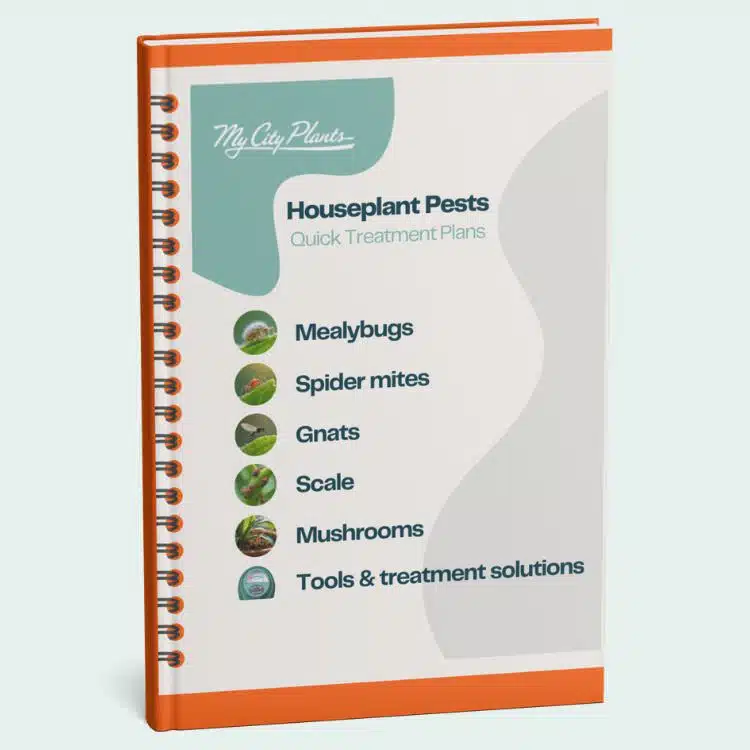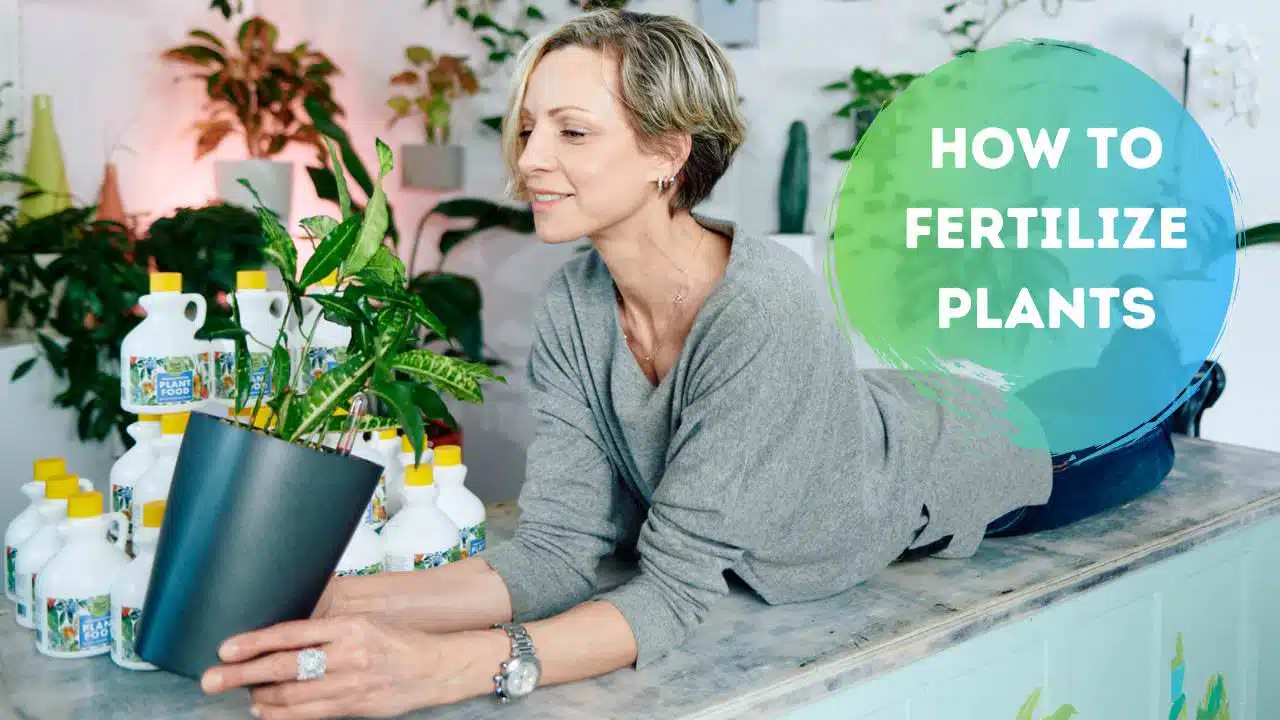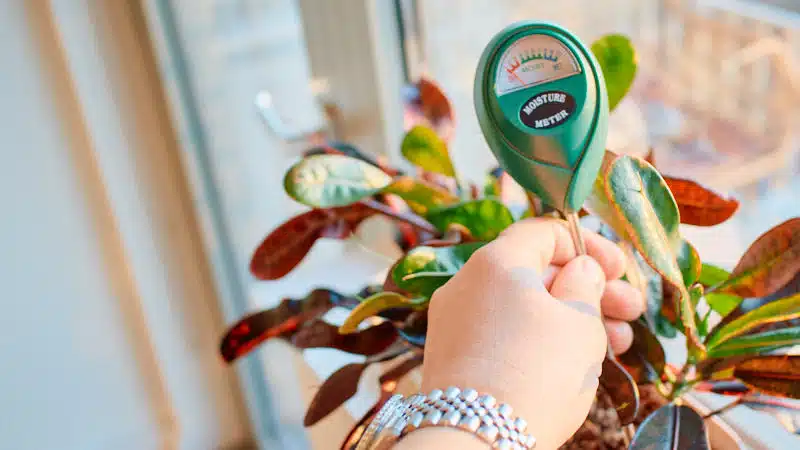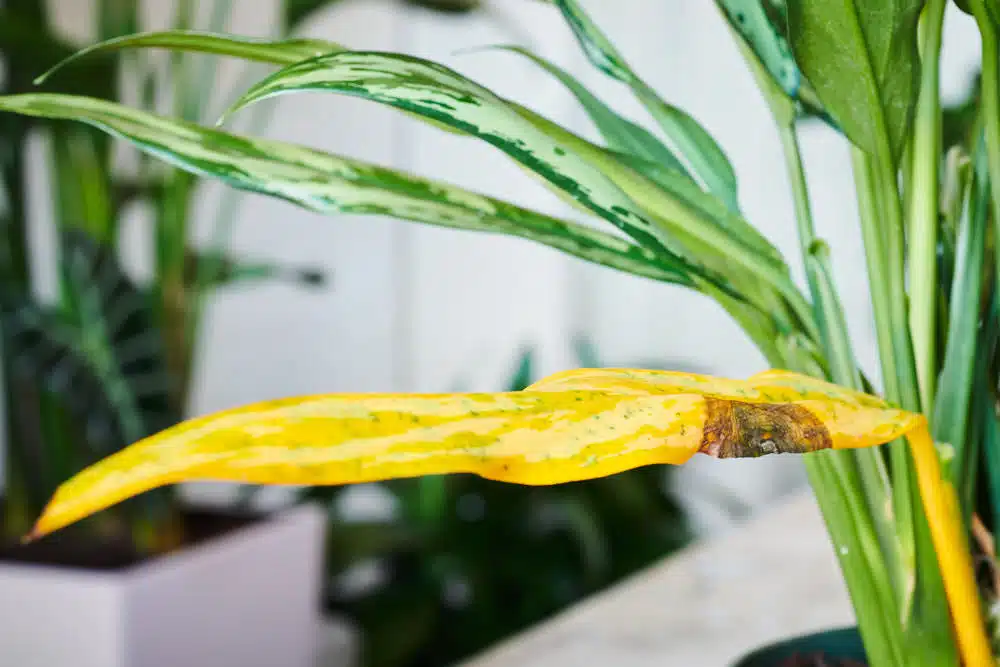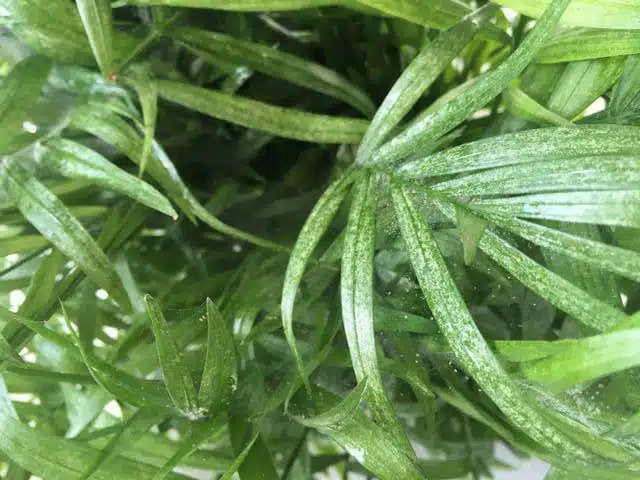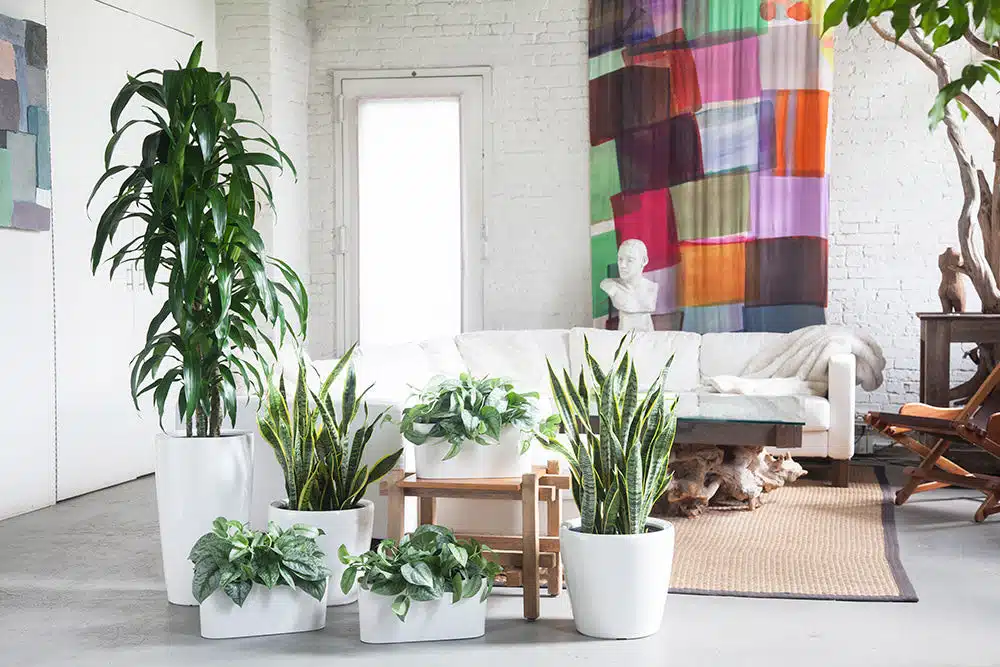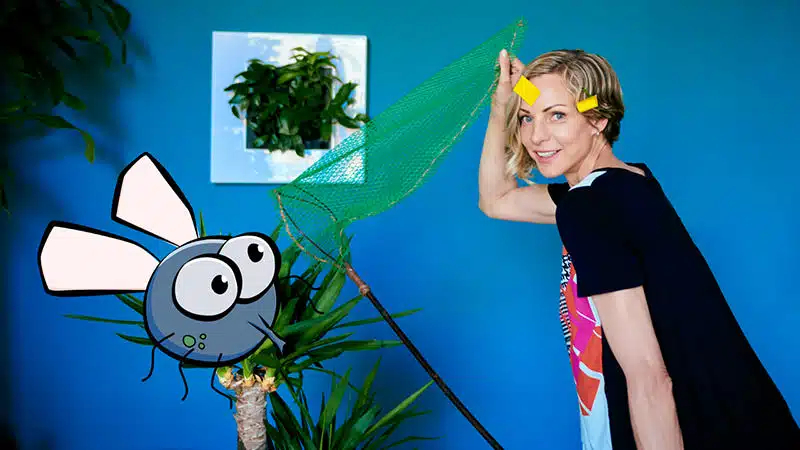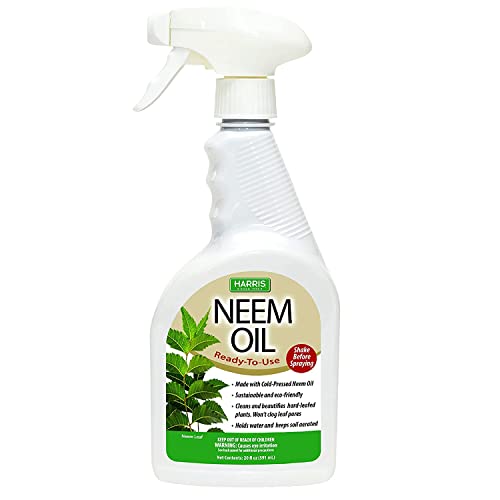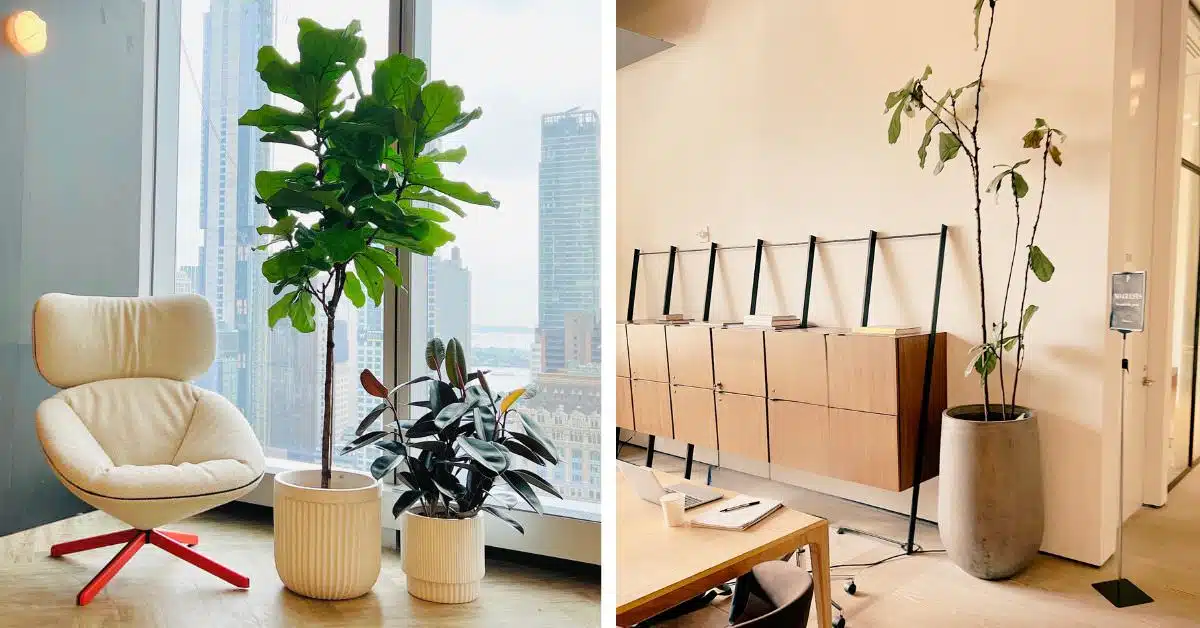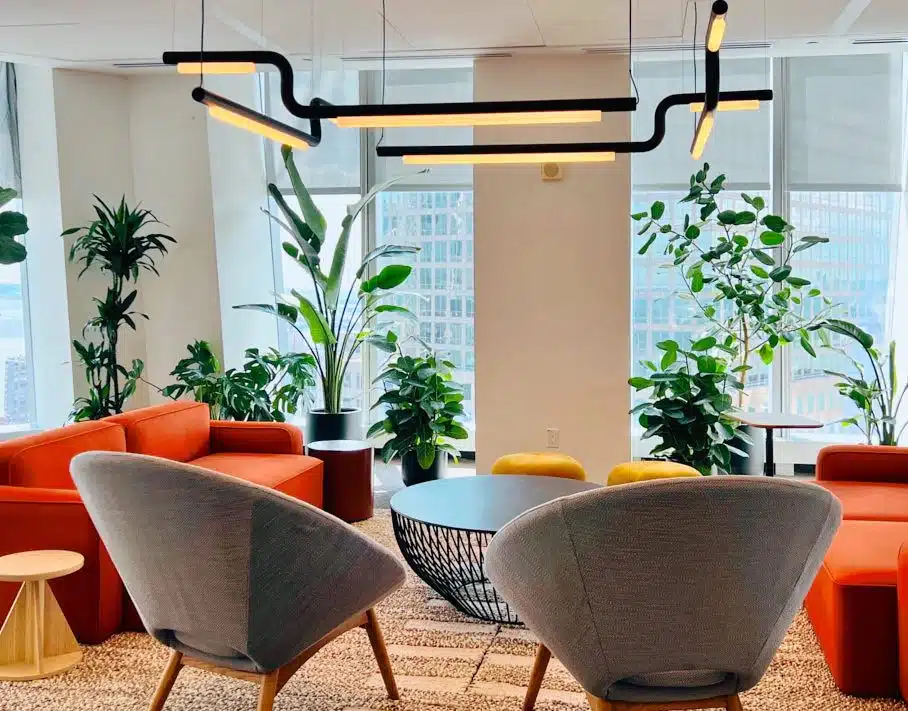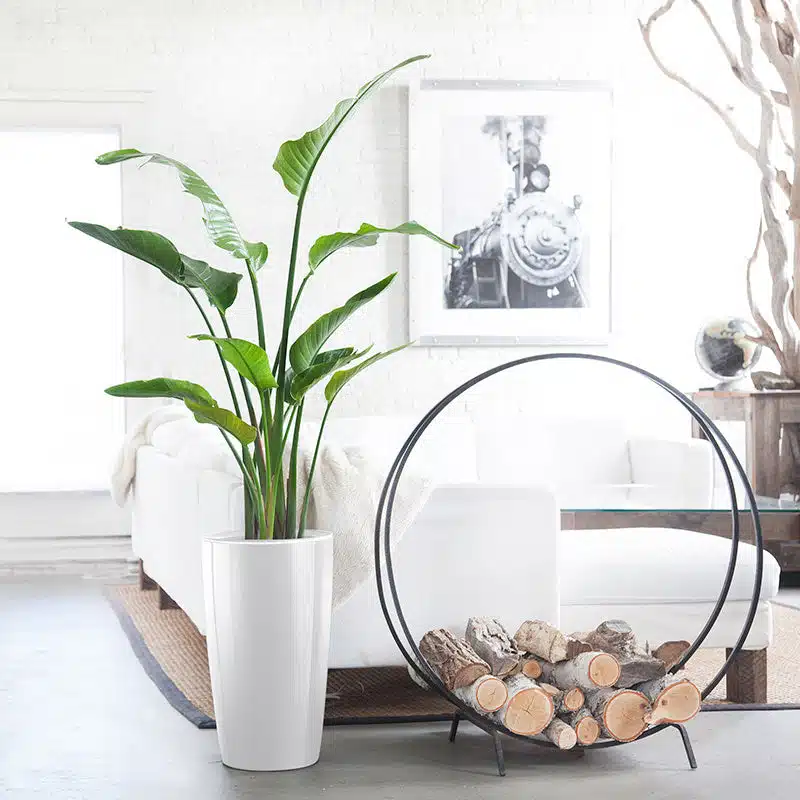Essential Plants for Windowless Rooms
Dreaming of a lush indoor garden but worried that your windowless room might be a deal-breaker?
Good news—it’s entirely possible to grow beautiful low light, moderate light or bright indirect light indoor plants even in spaces without natural light!
Whether it’s a basement, office cubicle, or any room lacking windows, you can still enjoy the benefits of indoor greenery.
In this guide, we’ll explore the best low light, moderate light and bright indirect light indoor plants for windowless rooms and share expert tips on how to care for them.
Understanding Light Needs for Indoor Plants
Plants rely on light for photosynthesis, which is essential for their growth and survival. In windowless rooms, natural sunlight is absent, so providing the right artificial lighting becomes crucial.
Under the right artificial lighting conditions, numerous houseplants can flourish indoors. For optimal growth, provide fluorescent or LED grow lights for 12-14 hours per day to mimic natural daylight patterns.
Not all plants require the same amount of light or watering frequency. Understanding your plant’s needs will help you choose the perfect plants for your lifestyle and ensure you provide the proper lighting setup for your plants in rooms where natural light is absent.
Top 22 Low Light Indoor Plants for Windowless Rooms
1. Aglaonema (Chinese Evergreen): The Versatile Beauty

Aglaonema, also known as Chinese Evergreen, is a fantastic choice for dim light plants. With its vibrant foliage ranging from deep greens to variegated pinks and reds, it’s both eye-catching and easy to care for.
- Care Tips:
- Watering: Low Watering Frequency. Allow the soil to dry out to about three-quarters of the way down.
- Light: Low to Moderate.
- Bonus: Acts as an air purifier, improving indoor air quality.
2. Snake Plant (Sansevieria): The Low-Maintenance Favorite

The Snake Plant is one of the best low light indoor plants for beginners. Its tall, sword-like leaves bring a modern touch to any space, and it’s nearly indestructible!
- Care Tips:
- Watering: Very Low Watering Frequency. Water only when the soil is completely dry.
- Light: Low to Moderate.
- Bonus: Excellent air purifier, removing toxins from the air.
3. ZZ Plant (Zamioculcas zamiifolia): Hardiness and Glossy Leaves

The ZZ Plant is renowned for its glossy, dark green leaves and ability to thrive on neglect.
Explore our comprehensive ZZ Plant Care guide for everything you need to know about nurturing these amazing plants.
- Care Tips:
- Watering: Very Low Watering Frequency. Water only when the soil is completely dry.
- Light: Low to Moderate.
- Bonus: Adds a stylish touch to your decor and purifies the air.
4. Peace Lily (Spathiphyllum): Elegance in Low Light

Peace Lilies bring elegance with their glossy leaves and stunning white flowers. This low light plant blooms even in low light settings. To bloom frequently and vibrantly, Peace Lilies need brighter light.
- Care Tips:
- Watering: High Watering Frequency. Do not allow the soil to dry out completely. Keep the soil consistently moist but not soggy.
- Light: Low to Moderate.
- Bonus: Effective at removing common indoor pollutants.
5. Dracaena Lisa: A Hardy Tall Indoor Plant

Looking for tall indoor low light plants? Dracaena Lisa is a great option with its striking, arching leaves.
- Care Tips:
- Watering: Water when the top inch of soil is dry; avoid overwatering.
- Light: Low to Moderate.
- Bonus: Adds height and structure to your space while purifying the air.
6. Pothos (Epipremnum aureum): The Resilient Trailing Vine

Pothos, also known as Devil’s Ivy, is a popular low light hanging plant with vibrant, heart-shaped leaves.
- Care Tips:
- Watering: Low Watering Frequency. Allow the soil to dry out to about three-quarters of the way down.
- Light: Low to Moderate.
- Bonus: Excellent for hanging baskets or shelves and purifies indoor air.
7. Philodendron: The Versatile Green Companion

Philodendrons are adaptable and come in various forms, from trailing vines to upright varieties. Another great low light hanging plant.
- Care Tips:
- Watering: Low Watering Frequency. Allow the soil to dry out to about three-quarters of the way down.
- Light: Low to Moderate.
- Bonus: Adds a tropical feel to your space and helps cleanse the air.
8. Cast Iron Plant (Aspidistra elatior): The Indestructible Choice

True to its name, the Cast Iron Plant is nearly indestructible and thrives in conditions most plants can’t tolerate. This plant is also in the low light plants group.
- Care Tips:
- Watering: Low Watering Frequency. Allow the soil to dry out to about three-quarters of the way down.
- Light: Low to Moderate.
- Bonus: Resistant to neglect, temperature fluctuations, and low humidity.
9. Spider Plant (Chlorophytum comosum): The Air-Purifying Champion

Spider Plants are known for their cascading foliage and small white flowers.
- Care Tips:
- Watering: Moderate Watering Frequency. Do not allow the soil to dry out completely.
- Light: Low to Moderate.
- Bonus: Excellent at removing indoor air pollutants like formaldehyde and xylene.
10. Arrowhead Plant (Syngonium podophyllum): The Dynamic Grower

The Arrowhead Plant features uniquely shaped leaves that change as the plant matures.
- Care Tips:
- Watering: Moderate Watering Frequency. Do not allow the soil to dry out completely. Keep the soil consistently moist but not soggy.
- Light: Low to Moderate.
- Bonus: Offers a variety of leaf colors and patterns to brighten up dim spaces.
11. Bird’s Nest Fern (Asplenium nidus): The Tropical Touch

Add a tropical vibe with the Bird’s Nest Fern’s bright green, wavy fronds.
- Care Tips:
- Watering: Moderate Watering Frequency. Do not allow the soil to dry out completely.
- Light: Moderate to Bright Indirect.
- Bonus: Adds lush greenery and improves air humidity.
12. Corn Plant (Dracaena fragrans): The Fragrant Beauty

The Corn Plant, a beloved choice among large low light indoor plants, is admired for its elegant, arching leaves and doubles as an excellent addition to any bedroom.
- Care Tips:
- Watering: Low Watering Frequency. Allow the soil to dry out to about three-quarters of the way down.
- Light: Low to Moderate.
- Bonus: Can grow quite tall, making it ideal for filling empty corners.
13. Money Tree (Pachira aquatica): Good Fortune and Greenery

The Money Tree is believed to bring good luck and prosperity, featuring braided trunks and lush leaves.
- Care Tips:
- Watering: Low Watering Frequency. Allow the soil to dry out to about three-quarters of the way down.
- Light: Moderate to Bright Indirect.
- Bonus: Adds aesthetic appeal and is pet-friendly.
14. Staghorn Fern (Platycerium): The Wall-Mounted Wonder

Staghorn Ferns are unique plants that can be mounted on walls, adding a touch of the wild to your indoor space.
- Care Tips:
- Watering: High Watering Frequency. Soak the root ball on average once a week or when the potting medium feels dry to the touch, ensuring it doesn’t dry out completely.
- Light: Moderate to Bright Indirect.
- Bonus: Makes a striking decorative piece for any room.
15. English Ivy (Hedera helix): The Classic Climber

English Ivy is a fast-growing vine that can add a lush, green backdrop to your indoor environment.
- Care Tips:
- Watering: Moderate Watering Frequency. Do not allow the soil to dry out completely.
- Light: Moderate to Bright Indirect.
- Bonus: Excellent for vertical gardens or hanging baskets and purifies the air.
16. Anthurium: The Colorful Bloomer

Anthuriums are known for their bright, heart-shaped flowers and glossy leaves.
- Care Tips:
- Watering: High Watering Frequency. Do not allow the soil to dry out completely. Keep the soil consistently moist but not soggy.
- Light: Moderate to Bright Indirect.
- Bonus: Adds a splash of color to dim spaces.
17. Monstera Deliciosa: The Swiss Cheese Plant

Monstera Deliciosa features large, perforated leaves that make a bold statement.
- Care Tips:
- Watering: Low Watering Frequency. Allow the soil to dry out to about three-quarters of the way down.
- Light: Moderate to Bright Indirect.
- Bonus: Great for filling large spaces and adds a tropical feel.
18. Hoya Carnosa (Wax Plant): The Fragrant Climber

Hoya Carnosa has thick, waxy leaves and produces clusters of star-shaped flowers.
- Care Tips:
- Watering: Very Low Watering Frequency. Water only when the soil is very dry.
- Light: Moderate to Bright Indirect.
- Bonus: Sweetly scented flowers enhance your indoor environment.
19. Dieffenbachia: The Patterned Beauty

Dieffenbachia offers striking foliage with variegated patterns that brighten up any room.
- Care Tips:
- Watering: Low Watering Frequency. Allow the soil to dry out to about three-quarters of the way down.
- Light: Moderate to Bright Indirect.
- Bonus: Adds visual interest with its patterned leaves.
20. Calathea: The Living Art

Calatheas are admired for their intricate leaf patterns and colors.
- Care Tips:
- Watering: Moderate Watering Frequency. Do not allow the soil to dry out completely. Keep the soil consistently moist but not soggy. Consistency is very important for these plants.
- Light: Moderate to Bright Indirect.
- Bonus: Leaves may fold up at night, adding movement to your decor.
21. Bamboo Palm (Chamaedorea seifrizii): The Indoor Oasis

Bamboo Palms bring a touch of the tropics indoors and can grow quite tall.
- Care Tips:
- Watering: Moderate Watering Frequency. Do not allow the soil to dry out completely. Keep the soil slightly moist; avoid overwatering.
- Light: Moderate to Bright Indirect.
- Bonus: Excellent air purifier and adds height to your space.
22. Peperomia: The Compact Charmer

Peperomias are small plants with a variety of leaf shapes and colors, perfect for desks and shelves.
- Care Tips:
- Watering: Low Watering Frequency. Allow the soil to dry out to about three-quarters of the way down.
- Light: Moderate to Bright Indirect.
- Bonus: Easy to care for and ideal for small spaces.
Tailored Light Specifications
Here are some tailored light specifications for each plant group to ensure optimal lighting for healthy growth and vibrant foliage.
Group 1: Low to Moderate Light Plants
(Aglaonema, ZZ Plant, Sansevieria, Peace Lily, Dracaena Lisa, Pothos, Philodendron, Spider Plant, Arrowhead Plant, Corn Plant, Iron Plant)
LED Grow Lights
- Type: Full Spectrum. Energy-efficient and long-lasting, mimicking natural daylight.
- Color Temperature: 4000K to 6500K. Provides balanced light for foliage growth and plant health.
- Light Intensity: Moderate. Aim for 10,000–20,000 lux (1,000–2,000 foot-candles).
- Duration: 10–12 hours daily, followed by a rest period.
- Placement: 12–18 inches above the plant.
- Tips: Use a timer for consistency and avoid overly intense lights that may stress the plants.
Fluorescent Lights
- Type: T5 or T8 fluorescent tubes, or compact fluorescent lights (CFLs).
- Color Temperature: 4000K to 6500K (daylight spectrum).
- Light Intensity: Moderate.
- Duration: 12–14 hours daily to compensate for lower intensity.
- Placement: 6–12 inches above the plant for adequate coverage.
- Tips: Use a reflector or hood to maximize the light directed toward the plant. Replace bulbs every 12–18 months, as their intensity diminishes over time, even if the bulb is still operational.
Group 2: Moderate to Bright Indirect Light Plants
(Bird’s Nest Fern, Money Tree, Staghorn Fern, English Ivy, Anthurium, Monstera, Hoya, Calathea, Dieffenbachia, Bamboo Palm, Peperomia)
LED Grow Lights
- Type: Full Spectrum with slightly higher output. Mimics natural daylight with added brightness.
- Color Temperature: 5000K to 6500K. Perfect for promoting vibrant growth.
- Light Intensity: Moderate to bright. Aim for 15,000–20,000 lux (1,500–2,000 foot-candles).
- Duration: 12–14 hours daily for optimal results.
- Placement: 12–16 inches above the plant.
- Tips: Use diffusers or adjust placement for light-sensitive plants like Calathea and Dieffenbachia.
Fluorescent Lights
- Type: T5 fluorescent tubes with reflectors for better light direction.
- Color Temperature: 5000K to 6500K (daylight spectrum).
- Light Intensity: Moderate to bright.
- Duration: 14–16 hours daily to support growth.
- Placement: 6–12 inches above the plant.
- Tips: Use a reflector or hood to maximize the light directed toward the plant. Replace bulbs every 12–18 months, as their intensity diminishes over time, even if the bulb is still operational.
Care Tips for Maintaining Low Light Indoor Plants
Caring for plants in low light requires some adjustments. Here are some tips to ensure your plants thrive:
- Water Wisely: Always check soil moisture before watering. Low-light plants tend to have less frequent watering needs because they use less energy for photosynthesis and their growth rate slows down in lower light conditions.
- Ensure proper drainage: Use well-draining soil and pots with drainage holes to prevent root rot.
- Clean the Leaves: Dust can hinder photosynthesis and create an ideal environment for pests. Regularly cleaning leaves helps prevent dust buildup and reduces the risk of pest infestations.
- Rotate Regularly: Rotate plants occasionally for even growth.
- Monitor humidity: Many low-light plants, such as ferns and peace lilies, prefer higher humidity, so consider misting occasionally or placing a humidifier nearby.
- Be patient with growth: Low-light conditions slow down growth, so be patient with the plant’s pace and avoid over-fertilizing.
Frequently Asked Questions
Can I grow plants in a room with only fluorescent lighting?
Yes! Many low light indoor plants can thrive under fluorescent lights. Just ensure they receive at least 12 -14 hours of light daily.
Are there small low light plants suitable for windowless rooms?
Absolutely. Many of the plants mentioned come in smaller sizes, perfect for desks, side tables or shelves.
How do I prevent overwatering in low light conditions?
Use well-draining soil and pots with drainage holes.
Always check the soil before watering. Insert your finger as deep as possible into the soil or use a soil moisture meter to assess moisture levels. Water only when the soil is appropriately dry for the plant type. For example, Snake Plants require their soil to be completely dry before watering, while ferns prefer to be watered when the soil is still slightly moist.
Can I keep plants in spaces like a home theater?
Yes, as long as you provide artificial lighting for at least 12-14 hours a day.
Bringing Life to Windowless Rooms
Bringing greenery into your windowless rooms is not only possible but also rewarding. With the right selection of plants and proper care, you can transform any dim space into a vibrant oasis. These plants not only beautify your home but also improve air quality and boost your mood. So go ahead and embrace the joy of indoor gardening, even in the darkest corners!
Happy planting! If you have any questions or need more tips, feel free to comment below. Your journey to a greener space starts now!
Sources
University of Maryland Extension – Low Light Impacts on Indoor Plants
College of Agricultural, Consumer & Environmental Sciences Illinois Extension – Brighten up dim interiors with low-light houseplants
University of Missouri Extension – Lighting Indoor Houseplants
Texas A & M AgriLife Extension – Ornamental Production
University of Maryland Extension – Lighting for Indoor Plants
